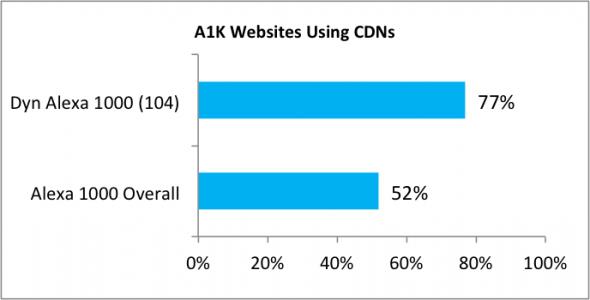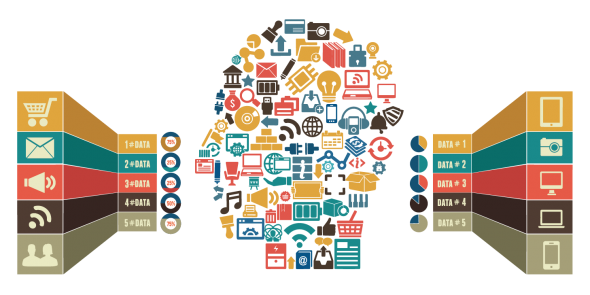21st April, 2021
19 Min read
Your query on the web to find out about CDN, multi CDN, federated CDN, hybrid CDN and why is it important at all, can easily turn into a stream of different, sometimes confusing information, as these terms are getting more and more popular, and definitions are more and more dispersed, given the number of providers that you can choose from nowadays. This article is an effort to easily explain what a Multi CDN is, what are its benefits, and how companies can create, implement and monitor their Multi CDN setups.
At GlobalDots we analyze, implement and maintain CDNs for variety of companies, from Fortune 500 to startups and small-to-medium enterprises. Since the topic is broad and many of our customers ask very specific questions, we decided to put together this resource page for everyone to learn more about Multi CDNs. We hope you’ll enjoy this article – feel free to share it with your colleagues or ask our specialists anything you want to know about CDNs.
Learning about CDNs can be tricky, especially if you are fresh to this business. You need a starting point, a gentle nudge across content delivery networks and a fine understanding of how these technologies can actually turn your business into a more exciting venture across new regions and push you to new markets and accelerate your websites to almost a point of no return. You wouldn’t return to that old, slow website if you had an overhauled one, would you? And you don’t need reminding that your user is impatient and that this affects your revenue.
You need clear solutions to gain site speed, avoid latency and deliver your multimedia content from Denver to Tokio, in milliseconds. If you can sit still and read through this article, you will learn once and for all what is a CDN, when to use a single one and when to use more, how it benefits your business, how it has proven useful in industry so far and step by step, we will explain what you need to ask from your vendor and how to choose one, or how to go from one to another. Because you can and you should strive for the best.
How One AI-Driven Media Platform Cut EBS Costs for AWS ASGs by 48%

Chapter 1: Multi CDN Explained
Content delivery networks (CDNs) use surrogate servers located across different data centres in different regions of the world. These servers host the content of websites (images, videos, javascript…) and by hosting them in locations which are closer to the end user, they reduce the distance the information has to travel.
In other words, the content is always pushed from geographically distributed data centres that are closest to the users which turned CDNs into an irreplaceable tool today that improves entire technological structure that backs up your business.

They reduce load time of your page, provide a more secure network, manageable traffic and assure maximum availability of your website. However, they will perform better in one part of the world, and possibly clog on the other. Some will include one feature, but not the other. Each provider has Points of Presence (PoPs) in different regions and different places. The quality of user experience will depend on their proximity to those PoPs, so it’s paramount for your business to select the provider closest to your customer. The use of real-time load-balancing between multiple CDNs instead of one is considered a superior solution compared to mono-CDN, and leaves almost a zero chance for your cloud to crash which means no outages, and no downtime which many will consider a key to leading a successful enterprise today.
The internet is not such a secure place for the digital enterprise with internal and external security threats on the rise. Bot invasion, DDoSattacks, account highjacking, web application security breaches, spams and frauds, are just some of the concerns that you would rather confide to a third party then handle on your own. Yet, the network is a key asset for the digital enterprise, there’s no avoiding it, and there’s another pressing issue: you must ensure quick content delivery and site speed at all times, or you will cease to exist on a saturated market that we are witnessing today. Implementing a multi CDN strategy is what comes to rescue, especially for sites that experience huge amounts of traffic on a global scale. Video streaming companies and social platforms almost without exception confide in more than one CDN to ensure 100% availability of their digital content.
They call it a shift “from atoms to bits”, the increased adoption of multiple CDNs. The move from physical goods to digitally delivered goods and services. What digital business are doing with their internet infrastructure is compared to what once manufacturing firms did when they’ve been building new factories and plants to meet demand. Multiple CDNs are used on a regular basis in the case of giants such as Apple, Netflix, LinkedIn that use 2,3, or 4 CDNs.
Tweet this: The increased adoption of Multiple CDNs is a shift “from atoms to bits”
According to recent research, the CDN market will grow to $21.6 billion by 2019, and as of 2014 the CDN market was at $3.71 billion. Which means that the need for quick content delivery is growing dramatically and whether that content comes in the form of an image, video, audio, or other data file, it needs to get to people across every continent, at all times, as rapidly as possible. Enterprises need to be ever more responsive to consumer demand that is being reshaped by mobile commerce.
Tweet this: The CDN market will grow to $21.6 billion by 2019
The confusion between Multi & Federated CDNs: Sometimes, people will confuse multi CDNs with federated CDNs but they are separate entities, so let us clear out some space on that. In essence, multi CDNs are geared toward customers while federated CDNs are geared toward service providers. A federated CDN, as defined by Cisco, is something that has multi-footprint, open CDN capabilities built from resources owned and operated by autonomous members. This means that several autonomous members – CDNs, hosting providers, and cloud application providers – pool resources in order to offer a powerful and a wider reaching product. Federated CDNs allow members to sell services that reach a worldwide audience and provide an interconnection model between content and service providers that offers caches closer to the end user. They have emerged recently due to the increase in volume of both traffic and content and to meet the need of the next generation video requirements. Bottom line, federated CDNs are for service providers looking to build their own CDN with third party resources that are already in place.
Tweet this: The confusion between Multi & Federated CDNs – Explained
Chapter 2: Single vs. Multi CDN
By orchestrating the multiple CDN providers, you can set exact criteria, e.g. time of the day, to ensure that your customer always finds the content he seeks. This helps you gain more control over your business. You don’t lose important data by choosing one provider over another. Multi CDNs automatically switch to which ever CDN provider enables the best possible performance for your website at any given time/place.
There are, however, instances in which this management can just add to complexity, in which case you should use a single CDN. And when is that? It’s advisable for businesses that emerge around certain areas and aren’t evenly distributed worldwide yet. Also, if you are only starting to develop audience and you are not ready to invest in additional CDNs and software. If you are an e-commerce platform, and not a video streaming company or a social platform, one CDN is actually enough. You can rely on a single CDN and then easily scale without having to pay large fees.
Tweet this: When to use a Single, and when to use a Multi CDN?
You should decide for a multi CDN strategy if your traffic comes from all over the world. If you have a huge global audience, then there’s a small chance that a single CDN will be able to support it all. If you are a video streaming company, then multi CDN is almost an obligation. You will also want additional CDN provider to offload overages if you exceed usage limits with current provider. Whichever you decide, it is advised that you take a holistic analysis of your website performance. A site audit, if you’d like.
Tweet this: You should decide for a Multi CDN if your traffic comes from all over the world

Choosing a strategy depends on the type and volume of the content that you are providing. It is absolutely useful to use multi CDNs if you are aiming to emerge on new markets, that is, other markets that your current provider doesn’t cover. Your competitors are another thing to consider and using a content delivery network is a number one advice when it comes to practices in overhauling your site speed. Using multiple content delivery networks is even better.
CDNs are ideal for accelerating the delivery of rich media, large software images, streaming video and other bandwith-intensive content. Every CDN has unique selling points. Some CDN vendors are particularly strong in certain regions, while others specialise in specific application like streaming media. Many organisations leverage multiple CDN providers to maximise coverage and address diverse requirements.
The undeniable advantage of having multiple CDN providers is that your business can benefit from their strength, without having to worry about their weak points. The undeniable challenge is that the configuration sync between multiple CDNs will require additional know-how, investment and development time. We will lead you through steps, in the following chapters, that will relieve you of headache for providing such a setup and help you decide, implement and maintain the best solution for your business.
Chapter 3: Growth & Industry Usage Analysis
In a research done in June, 2014 by Dyn, a cloud-based internet performance management company, it is established that more than 50% of the Alexa 1000 websites use a CDN. The number of domains associated to multiple CDNs increased by 6-8% in the following quarters. The graph below includes Dyn customers ranked in Alexa 1000, whose adoption rates are even higher and come to almost 80%. The research results indicate that “CDN technology is now basic underlying structure component for high-performance websites”, and furthermore according to Dyn, “there is also a high correlation between CDN deployments and managed DNS; more than one quarter of the Alexa 1000 uses CDN and DNS services.”
Dyn research – Websites that use CDN (Dyn/Overall)

Tweet this: More than 50% of the Alexa 1000 website use a CDN
Dyn also did a research on market landscape and came up with the list of the most deployed CDNs from the same year, that, with percentage included, looks like this:
Amazon Cloud Front: 30%
Akamai: 29%
Max CDN: 8%
EdgeCast: 7%
Ixdns.com: 4%
CloudFlare CDN: 3%
CDNetworks: 3%
Level 3: 2%
Limelight: 2%
ChinaCache: 2%
Tweet this: Amazon Cloud Front & Akamai hold 59% of the CDN Market Landscape
Let us quickly portray the current top three to give you an insight into the magnitude of these platforms. Amazon Cloud Front offered by AWS has servers located in Europe (UK, Ireland, Netherlands, Germany, Spain), Asia (Hong Kong, Singapore, Japan, Taiwan, India), Australia, South America, as well as in several major cities in US. The service operates from 54 edge locations on five continents. Akamai (Hawaiian word for ‘intelligent, witty’), that competes with it, is headquartered in Massachusetts, US and is also one of the world’s largest distributed content delivery platforms, with customers such as Apple, Facebook, Bing, Twitter, eBay and healthcare.gov. Akamai network utilises over 170,000 servers deployed in more than 100 countries. Max CDN is based in LA, California and maintains regional edge servers where customer files are replicated in multiple locations around the world. Direct reach is around 90 countries.
At a regional level, a large majority of websites deploying a CDN are based in North America: 63%, Asian Pacific region is second with 19% and Europe, Middle East and Africa rank third at 16%. It is worth noting, from the same research, that countries such as China, South Korea and India, as well as Japan and Australia, are more and more using CDNs to power their large websites.

In terms of type of the content, top industries that use single CDN are internet/computer software, media, retail, leisure, sports and recreation, corporate services, electronics etc., and those that use multi CDN are, again, internet/computer software firms, media, retail, corporate services, schools and education, health, wellness and fitness, consumer products etc. There are obviously some overlaps. Software firms in particular like CDNs to push software updates as close to end user as possible, as endpoint devices go mobile. Also, top 5 CDN users are also using multi CDN.
Chapter 4: Key Components of an Effective Multi CDN Strategy
There are two different ways to implement a multi CDN: aggregation and load balancing.
A CDN aggregator combines the functionality of various CDNs and is controllable via one main control panel. The upside of this is that you are not required to modify each CDN specifically, which in turn reduces the amount of time required to make a change. As a downside, this same feature can be seen as one that obstructs the customisability of each CDN as they are all aggregated into one central control panel. If you are not seeking to do much customization and you do not have a great deal of resources to associate with the administration of a dynamic CDN, then the aggregation method is the one that will work in your favour.
The second option for implementing a CDN is to use a load balancer service. Load balancing for a multi CDN is used to distribute requests to the most optimal server within the cluster of servers across various CDNs. It is the process of efficiently distributing user requests, based on a user region, which avoids overloading a single server and reduces latency times.
Tweet this: Multi CDN can be implemented by both Aggregation & Load balancing service.
Another thing to consider while implementing a CDN is a DNS management system that will accompany it. The investment in CDNs for delivery video download and content distribution can be lost if it doesn’t go along with a solid plan to manage your DNS. DNS resolution can account for as much as 29% of initial page load time. For optimal user experience, you need to consider a series of DNS queries that every user’s first interaction begins with. Poor DNS performance can lead to slow page loads, customer abandonment, and lost business.
Tweet this: Investment in CDNs can be lost if not accompanied with managed DNS service.

As a perfect complement to a CDN, managed DNS solutions are specifically designed to extend website performance and reliability. Some CDN providers will offer a managed DNS service as an adjunct business, or you can choose a dedicated provider that specialises in DNS and thus gain a significant functional and financial advantages. Why? Because having a separate DNS solution enables failover to other resources in case your CDN becomes unavailable. Also, some CDNs don’t have the network intelligence to survive a targeted denial of service or distributed denial of service attack like an independent DNS service. While a CDN provider’s DNS network infrastructure can be just as expansive as their CDN footprint, most have not optimised their routers, operating systems, and code bases for DNS responses. When evaluating a CDN vendor, you should make sure that it supports third-party managed DNS services. Whether you use one or many CDNs, it is advisable that you let your CDN provider focus on content deliver and that you trust your DNS management to a DNS expert.
Tweet this: You should always make sure your CDN vendor supports managed DNS services.
Chapter 5: How to Choose the Best CDN Provider
Running a high performance platform has never been more challenging. As it is often heard today: The Web has evolved, and performance is king. Website performance now influences whether a quarter’s revenue numbers are made or missed. And, since Google includes overall site speed as part of their page rank algorithm, it immensely affects site conversion rates and impact on search-engine rankings. Improving performance is not something that happens over night but is an ongoing process that seeks monitoring and measuring of your current strategy, informed decisions about extending infrastructure, and mitigating risks as you implement changes. In the same way, only an ongoing analysis of your CDN strategy will result in continuous improvement of your sites.
As CDN providers specialise to address specific audience locales, demographics, content types and device types, the market has become increasingly complex. The assorted CDN providers have varying strengths and weaknesses with regard to their peering transit with ISPs and backbone networks. CDN providers also gave differing levels of features and performance with regard to different traffic types. No one platform can offer the best performance everywhere, all of the time for all traffic types. As a result, many content providers are moving toward a hybrid approach to content delivery services.
First, you need to consider the specifics of your business alone and how Web performance applies to you and your customers.

For one, you should definitely take advantage of a multi CDN solution which is known as: eliminating the single point of failure or “SPOF”. Any system architect would advise against SPOF that could knock you offline.
Tweet this: Multi CDNs eliminate the Single Point Of Failure (or SPOF)
Then, understand your current delivery ecosystem, that is, establish your origin outside of the CDN itself. Best practices would be to have multiple origins, at least a primary one and a failover. Multiple origins may be good for larger sites or mobile apps with high data needs. These origins can then be load balanced for performance and availability.
Another thing is that you should limit the number of features that you utilise with a specific CDN. Put the intelligence in your origin, where possible and attempt to use CDNs only for delivery.
It is advisable also that you limit the use of CDN origin storage. This will have to be replicated across multiple CDNs if you use it. Rather, opt for using cloud storage in multiple locations or set up your storage to be near your own origins.
Be sure that all your content uses best practices for caching. Usually the first 90% of content is easy to cache, it’s the last 5-10% that is tricky. Focus on the 90% first. The more you can cache, the faster you can be.
Tweet this: Always be sure that all your content uses best practices for caching.
You should definitely know what is your traffic type (http, https, large file, video) and what mechanisms will make it perform better. The type of traffic you have also largely determines your caching capabilities.
Think granularly. Remember that in different countries you will have different obstacles and different opportunities. You may even have different requirements, depending on the type of media or time of day. Determine what your business needs to succeed in each market.
Tweet this: When deploying CDNs – think granularly – different countries, different opportunities
In order to make best decisions about content delivery providers, other than server-side experience measurement, you need to be armed with true visibility into your customers’ experience. Take time to analyse how they differ around the globe. As you evaluate this, define your success parameters, that is, decide what you will focus on: response time, bounce rate, conversion… The more of parameters you define up front, the higher you can raise the expectations from your provider.

Finally, if you will be working in a multi-vendor environment, it is crucial that you have consistency across the platforms.
Chapter 6: What Questions to Ask Your CDN Providers
After you’ve done all this considerations, you may start formulating questions for your provider. It starts by answering some of the questions for yourself such as:
1. What regions are most important for you to perform well in?
2. Is your content mostly dynamic or static?
3. What fits best your industry specific requirements?
4. Do you need extra features, and if yes, can you specify them?
5. What is most important to you: performance or low cost? Define priorities.
Tweet this: What should you ask yourself before contacting a Multi CDN provider?
Now, with those answers provided, you should further investigate with your provider:
1. How can your CDN improve load times and decrease bounce rates?
This is important because CDN directly impacts user experience by reducing page content loading time in which way the customers are less frustrated, by reducing check out times so that the purchase stage goes as smoothly as possible, and by increasing website availability while ensuring that your website can be accessed anytime.
2. How does a CDN fit in A/B testing of my website performance?
In marketing, A/B testing is a randomised experiment with two variants, A and B, to identify changes to web pages that increase or maximise an outcome of interest (your click through rate, for example). You can ask a CDN provider to run a 48 hour test on your website to score your bandwidth, availability and page load times. This report will show how well your website works with and without the CDN. This is also a good idea if you already have a provider, but you are not happy with their services and are deciding to switch. Test and see if you should cancel it.
3. What is the network size of your CDN and how big is your reach?
The aim of this question is to determine the size of the CDN you are engaging and what your business is getting by choosing this provider’s services over someone else’s. Find out if that CDN provider has POPs (points of presence) in your targeted regions. The closer a POP is to your end user, the lower the latency, that is, time required to deliver web content to the client. Larger networks with more POPs are more reliable as they can easily scale and maintain consistent performance during traffic surges and heavy loads.
4. Does hiring a CDN makes sense if my traffic is primarily domestic?
Even if it is advised to use CDN for wide global traffic, hiring a CDN for domestic traffic may be a good strategic move for you. A CDN can carry a large amount of your traffic, relieving the pressure of your own servers. That way you reduce the risk of downtime during peaks and you get to reduce costs with your ISP provider.
5. What is the level of customer support I’ll be getting if I side with your CDN?
Things can go wrong, especially during seasonal peaks or under denial of service attacks. The CDN you choose should have a support team that is available 24/7. The response has to be fast, the longer it takes to fix your issue, the longer your site is not performing optimally. A top class user support team will warn you about problems before they even turn to real issues. This is what you should be striving for.
Tweet this: What should you ask your Multi CDN provider before purchasing?
Chapter 7: Mitigating Risk When Bringing on a New Provider (Including Tips)
Advices on mitigating risks while implementing CDNs are that you obtain actual user monitoring data. Moving to a hybrid model is a new way for you and your website to operate and performance optimization will be an ongoing exercise, not a one-time project.
Tweet this: Mitigating risk while using Multi CDN: Obtain actual user monitoring data.

Secondly, there is no way that you can isolate the deployment team and at all times, you need to be able to look at the entire corporate architecture, and not just single layers. You will need to review the plan with all teams that could be affected by your choice of implementing a CDN, including customer care, content editors and your application development teams. Ensure that you have an understanding with the marketing and creative team, as well, since there is no reason why all the requirements can’t be met.
Tweet this: Mitigating risk while using Multi CDN: Don’t isolate your deployment team.
Initiate testing early, and continue it as you roll out new services. Base some of the tracking on a consistent single object that you will be transitioning to a new environment. Tracking an object will give you a more qualitative metric for before and after comparison. Remember that moving to the cloud means that your test environments will need to be adapted. Ensure you spend time setting these up before you start integrating the new environments. If you are careful to evaluate the performance benefits of an intelligent load-balancing solution and if you monitor how end users are being affected by your new strategy, then implementing a CDN will actually be a new exciting venture for you, and help and support from your provider will come easily.
You will get a clear picture of your global user experience if you know how to ask for it. And now you do.
Conclusion and Further Reading
Every CDN solution is unique and that is mostly due to demographics, network pairing and geography.
Video, TV and streaming content is happening now and the rise of mobile commerce that has its own rules to content absorption, is unstoppable. To ensure 100% availability of your content, you need to make supervised decisions and to establish intelligence with those that handle your content. Whether you decide for a single, or a multiple CDN, it is of essence that you always test CDN performance for strength and weaknesses in different geographies. The more informed you are when you approach these issues, the more upgrades you can expect from your vendor. CDNs can prove to be a customisable, irresistible, and if used well, an infallible tool to meet new demands of your market.
Content delivery networks are surging as organisations from the web derive more revenue from the web with CDNs, than they do without them. They are now a basic underlying infrastructure component for best performance websites. Judging by the need for quick content delivery today, and by market forecasts, their usage will, if anything, dramatically rise.
Remember: CDNs provide faster delivery of objects and the objects can be tested in different geographical regions to ensure maximum availability and accessibility to your website.
Customers like Lufthansa, Bayer, Avast, Lamborghini and other leading brands and small-medium enterprises rely on GlobalDots services to keep their sites and applications fast & secure.
Contact us today to help you out with your performance and security needs.






